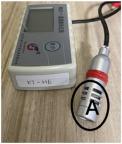当前位置:
X-MOL 学术
›
J. Build. Eng.
›
论文详情
Our official English website, www.x-mol.net, welcomes your feedback! (Note: you will need to create a separate account there.)
Relationship between indoor and outdoor temperatures in winter in the Hot Summer and Cold Winter Zone of China - Considering two sources of outdoor temperatures and different indoor heating methods
Journal of Building Engineering ( IF 6.4 ) Pub Date : 2024-03-26 , DOI: 10.1016/j.jobe.2024.109136 Yuchen Hou , Yingxin Zhu , Xiuqing Cui , Jing Wang , Xinyu Jia , Bin Cao
Journal of Building Engineering ( IF 6.4 ) Pub Date : 2024-03-26 , DOI: 10.1016/j.jobe.2024.109136 Yuchen Hou , Yingxin Zhu , Xiuqing Cui , Jing Wang , Xinyu Jia , Bin Cao

|
Thermal exposure is a global issue related to health. Environmental health studies often overlook indoor temperature in comparison to outdoor temperature. Exploring indoor and outdoor temperatures and their relationship is an important part to understand individual heat exposure. The aim of this study is to explore the indoor and outdoor temperatures and their relationship during winter, using weather station and ERA5-Land reanalysis outdoor temperature. Field experiments were conducted in both districting heating and non-district heating dwellings in the Hot Summer and Cold Winter zone of China, taking into account the influence of cold spells. Significant linear correlation was found between the weather station and reanalysis outdoor temperature. The indoor temperature of the district heating group was 8.4 °C higher than that of the non-district heating group. When the outdoor temperature approached 0 °C, the indoor-outdoor temperature difference of the district heating group was twice that of the non-district heating group. The non-district heating group experienced greater fluctuations in indoor temperature during the cold spell. The outdoor temperature could only partially explain indoor temperature, especially under the condition of district heating. The study suggests that outdoor temperature alone is insufficient when evaluating individual thermal exposure in winter. Furthermore, occupants with district heating and non-district heating may have different vulnerabilities, and thermal safeguard strategies in winter are suggested to be designed more targeted. This study may provides insights from the perspective of thermal environment for temperature and health studies.
中文翻译:

我国夏热冬冷地区冬季室内外温度关系——室外温度两种来源和不同室内采暖方式的考虑
热暴露是一个与健康相关的全球性问题。环境健康研究经常忽视室内温度与室外温度的比较。探索室内和室外温度及其关系是了解个人热暴露的重要组成部分。本研究的目的是利用气象站和 ERA5-Land 再分析室外温度,探索冬季室内和室外温度及其关系。在我国夏热冬冷地区,分别在分区供暖和非分区供暖两种情况下进行了现场试验,并考虑了寒潮的影响。气象站和再分析室外温度之间发现显着的线性相关性。集中供热组室内温度比非集中供热组高8.4℃。当室外温度接近0℃时,集中供热组室内外温差是非集中供热组的2倍。非集中供热组在寒潮期间室内温度波动较大。室外温度只能部分解释室内温度,特别是在区域供暖的情况下。研究表明,在评估冬季个人热暴露时,仅靠室外温度是不够的。此外,集中供暖和非集中供暖的住户可能存在不同的脆弱性,建议冬季热保障策略设计更有针对性。这项研究可以从热环境的角度为温度和健康研究提供见解。
更新日期:2024-03-26
中文翻译:

我国夏热冬冷地区冬季室内外温度关系——室外温度两种来源和不同室内采暖方式的考虑
热暴露是一个与健康相关的全球性问题。环境健康研究经常忽视室内温度与室外温度的比较。探索室内和室外温度及其关系是了解个人热暴露的重要组成部分。本研究的目的是利用气象站和 ERA5-Land 再分析室外温度,探索冬季室内和室外温度及其关系。在我国夏热冬冷地区,分别在分区供暖和非分区供暖两种情况下进行了现场试验,并考虑了寒潮的影响。气象站和再分析室外温度之间发现显着的线性相关性。集中供热组室内温度比非集中供热组高8.4℃。当室外温度接近0℃时,集中供热组室内外温差是非集中供热组的2倍。非集中供热组在寒潮期间室内温度波动较大。室外温度只能部分解释室内温度,特别是在区域供暖的情况下。研究表明,在评估冬季个人热暴露时,仅靠室外温度是不够的。此外,集中供暖和非集中供暖的住户可能存在不同的脆弱性,建议冬季热保障策略设计更有针对性。这项研究可以从热环境的角度为温度和健康研究提供见解。



























 京公网安备 11010802027423号
京公网安备 11010802027423号